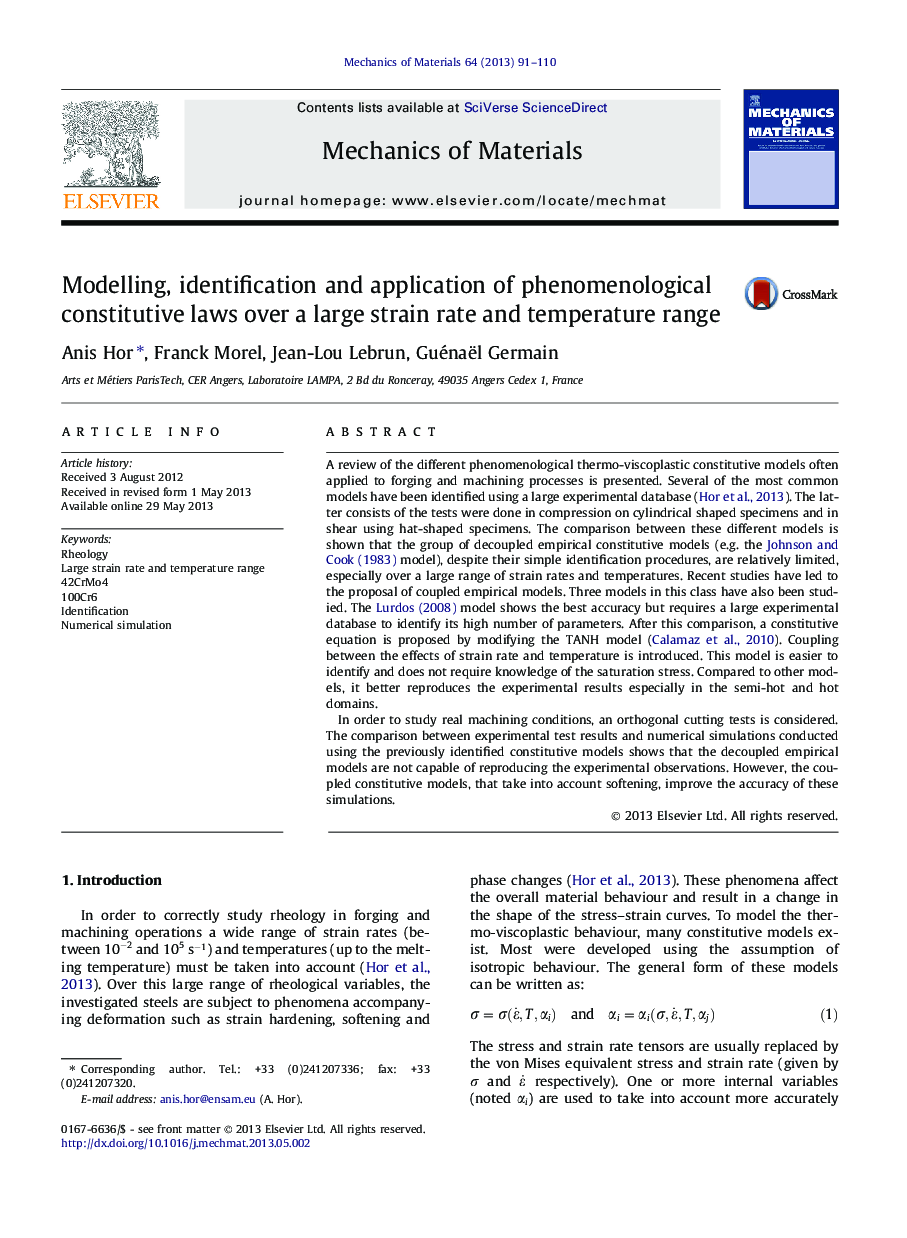| Article ID | Journal | Published Year | Pages | File Type |
|---|---|---|---|---|
| 800399 | Mechanics of Materials | 2013 | 20 Pages |
•A review of different empirical constitutive models is presented.•Usual empirical models for machining simulation are identified and compared.•A coupled empirical model (temperature–strain rate-work hardening) is proposed.•The proposed model is more accurate with reduced number of parameters.•In FE simulations of orthogonal cutting, softening effect should be accounted for.
A review of the different phenomenological thermo-viscoplastic constitutive models often applied to forging and machining processes is presented. Several of the most common models have been identified using a large experimental database (Hor et al., 2013). The latter consists of the tests were done in compression on cylindrical shaped specimens and in shear using hat-shaped specimens. The comparison between these different models is shown that the group of decoupled empirical constitutive models (e.g. the Johnson and Cook (1983) model), despite their simple identification procedures, are relatively limited, especially over a large range of strain rates and temperatures. Recent studies have led to the proposal of coupled empirical models. Three models in this class have also been studied. The Lurdos (2008) model shows the best accuracy but requires a large experimental database to identify its high number of parameters. After this comparison, a constitutive equation is proposed by modifying the TANH model (Calamaz et al., 2010). Coupling between the effects of strain rate and temperature is introduced. This model is easier to identify and does not require knowledge of the saturation stress. Compared to other models, it better reproduces the experimental results especially in the semi-hot and hot domains.In order to study real machining conditions, an orthogonal cutting tests is considered. The comparison between experimental test results and numerical simulations conducted using the previously identified constitutive models shows that the decoupled empirical models are not capable of reproducing the experimental observations. However, the coupled constitutive models, that take into account softening, improve the accuracy of these simulations.
